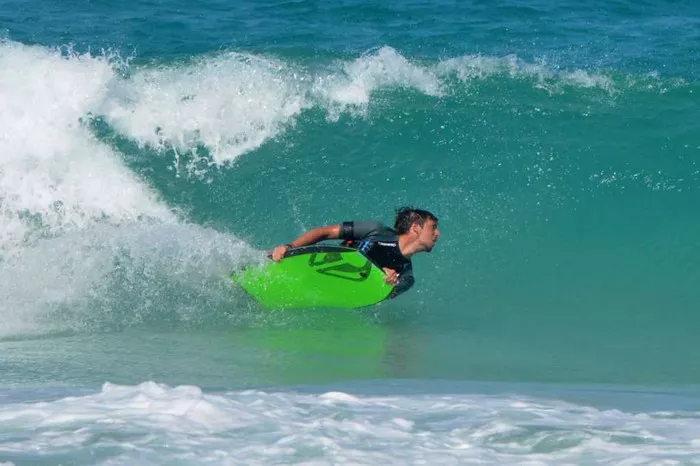When it comes to enjoying the thrill of riding the waves, bodyboarding stands out as an accessible and exhilarating water sport. Whether you’re a beginner or a seasoned rider, selecting the appropriate bodyboard size is crucial for maximizing your enjoyment and performance in the water. From wave conditions to individual preferences, several factors influence the ideal size of a bodyboard. In this comprehensive guide, we delve into the nuances of bodyboard sizing to help you make informed decisions and enhance your surfing experience.
Understanding Bodyboard Anatomy
Before delving into the specifics of bodyboard sizing, it’s essential to grasp the fundamental components of a bodyboard. Typically constructed from foam cores with a slick bottom and a deck on top, bodyboards come in various shapes, sizes, and materials. Key features include the core material, length, width, thickness, and tail shape, all of which contribute to the board’s buoyancy, maneuverability, and stability in the water.
The Importance of Choosing the Right Size
Selecting the appropriate bodyboard size is paramount for optimizing performance and comfort while riding waves. A board that’s too large may hinder maneuverability and responsiveness, while one that’s too small might compromise stability and buoyancy. By finding the perfect balance, riders can enhance their ability to catch waves, execute maneuvers, and enjoy a more exhilarating surfing experience.
Factors Influencing Bodyboard Size
Several factors come into play when determining the ideal size of a bodyboard. These include:
1. Rider’s Height and Weight:
A rider’s physical attributes significantly impact the size of the bodyboard they should choose. Taller and heavier individuals typically require larger boards with greater buoyancy to support their weight and maintain stability in the water.
2. Skill Level:
Beginners may benefit from larger, more stable bodyboards that offer forgiveness and ease of paddling. Advanced riders, on the other hand, often prefer smaller, more maneuverable boards that allow for greater control and responsiveness when performing tricks and maneuvers.
3. Wave Conditions:
The size and type of waves you intend to ride also influence bodyboard size selection. In larger, more powerful surf, a slightly larger board with increased buoyancy can provide added stability and control. Conversely, in smaller, mellower waves, a smaller board may offer greater maneuverability and responsiveness.
4. Preferred Riding Style:
Your preferred riding style and the types of maneuvers you aim to perform can dictate the size and shape of your bodyboard. Whether you enjoy cruising down the face of the wave, carving turns, or launching aerial maneuvers, choosing a board that aligns with your riding style is essential for optimizing performance and enjoyment.
Determining the Right Size
To determine the right size of bodyboard for your needs, consider the following guidelines:
1. Height and Weight Ratio:
As a general rule of thumb, your bodyboard should measure roughly between your knees and chin when standing upright. Additionally, the board’s width should allow you to comfortably grip the rails with your arms extended.
2. Buoyancy and Stability:
Ensure that the board provides adequate buoyancy to support your weight while maintaining stability in the water. A properly sized bodyboard should float effortlessly and remain stable under various wave conditions.
3. Tail Width and Shape:
Pay attention to the tail width and shape of the bodyboard, as these factors can influence maneuverability and control. A wider tail offers increased stability, while a narrower tail allows for sharper turns and greater maneuverability.
4. Trial and Error:
Ultimately, the best way to determine the right size of bodyboard is through trial and error. Experiment with different sizes and shapes to find what feels most comfortable and responsive for your riding style and preferences.
Conclusion
Choosing the right size of bodyboard is essential for maximizing your enjoyment and performance in the water. By considering factors such as rider’s height and weight, skill level, wave conditions, and preferred riding style, you can make informed decisions when selecting a bodyboard that suits your individual needs. Whether you’re a beginner learning the ropes or an experienced rider pushing the limits, finding the perfect size board will enhance your surfing experience and unlock new possibilities on the waves.
FAQs:
1. How should a boogie board fit?
A properly fitting boogie board is essential for safety and performance. When lying prone on the board, it should reach from your knees to your chin, allowing your arms to comfortably grip the edges. The board’s width should be wide enough to support your body and provide stability, but not too wide that it restricts movement. Additionally, ensure that the board’s weight capacity matches or exceeds your body weight to prevent it from sinking or losing buoyancy. Lastly, a snug leash around your wrist prevents the board from drifting away in the water.
2. Which is better boogie boards or bodyboards?
The choice between boogie boards and bodyboards depends on personal preference and intended use. Boogie boards, typically smaller and lighter, are favored for tricks and maneuvers in smaller waves. They offer agility and are easier to transport. Conversely, bodyboards, with their larger size and buoyancy, are better suited for riding larger waves and provide more stability. Bodyboards also offer more surface area for improved speed and control. Ultimately, the better option depends on the rider’s skill level, wave conditions, and preferred riding style.
3. Can I use a small bodyboard?
Yes, you can use a small bodyboard, but it’s essential to consider your weight and skill level. Small bodyboards are ideal for lighter riders or those who prefer increased maneuverability. However, if you’re heavier or riding larger waves, a small bodyboard may lack the necessary buoyancy and stability. It’s crucial to match the board’s size to your body weight and the wave conditions for optimal performance and safety. Additionally, consider your riding style and preferences, as smaller boards offer greater control and agility but may sacrifice speed and stability.


